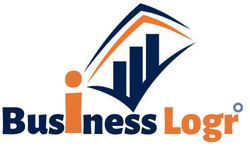
If you’re in the market for a new home, chances are you’ve been thinking about financing options. Conventional loans are one option you might consider. Unlike government-backed loans, conventional loans are not insured by the government and have more stringent requirements, including down payment requirements. In this article, we’ll take a closer look at the basics of conventional loan down payment requirements so that you can make an informed decision about your financing options.
What is a Conventional Loan?
Before we dive into the down payment requirements, let’s first define what a conventional loan is. A conventional loan is a type of mortgage loan that is not insured or guaranteed by the government. This means that the lender assumes all the risk if the borrower defaults on the loan.
Conventional loans come in two flavors: conforming and non-conforming. Conforming loans are loans that meet the standards set by Fannie Mae and Freddie Mac, two government-sponsored entities that buy mortgages from lenders. Non-conforming loans, on the other hand, do not meet these standards and are often referred to as jumbo loans.
What are the Down Payment Requirements for Conventional Loans?
One of the biggest differences between conventional loans and government-backed loans is the down payment requirement. With government-backed loans like FHA loans, the down payment requirement is typically much lower, often as low as 3.5% of the purchase price. Conventional loans, on the other hand, often require a higher down payment.
The exact down payment requirement for a conventional loan will depend on a few factors, including your credit score and the loan-to-value ratio (LTV) of the property you’re purchasing. In general, the higher your credit score and the lower the LTV, the lower your down payment requirement will be.
For most conventional loans, the down payment requirement is at least 5% of the purchase price. However, some lenders may require a higher down payment, especially for borrowers with lower credit scores or higher LTV ratios. In some cases, you may be able to make a smaller down payment if you pay for private mortgage insurance (PMI), which protects the lender if you default on the loan.
How to Qualify for a Conventional Loan
In addition to the down payment requirement, there are a few other requirements you’ll need to meet to qualify for a conventional loan. First and foremost, you’ll need to have a good credit score. Most lenders prefer borrowers with a credit score of 620 or higher, although some lenders may require a higher score.
You’ll also need to have a stable income and a low debt-to-income ratio (DTI). Your DTI is a measure of your monthly debt payments compared to your monthly income. Most lenders prefer borrowers with a DTI of 43% or lower, although some lenders may allow higher DTIs.
Finally, you’ll need to have enough money saved up for the down payment and closing costs. In addition to the down payment, you’ll also need to pay for things like appraisal fees, title fees, and other closing costs.
Conclusion
If you’re considering a conventional loan to finance your home purchase, it’s important to understand the down payment requirements. In general, you’ll need to make a down payment of at least 5% of the purchase price, although some lenders may require a higher down payment depending on your credit score and LTV ratio. To qualify for a conventional loan, you’ll also need to have a good credit score, a stable income, a low DTI, and enough money saved up for the down payment and closing costs. By understanding these requirements, you can make an informed decision about your financing options and find the loan that’s right for you.




